Sean Jacobs DC4 Linear Power Supply
Contents
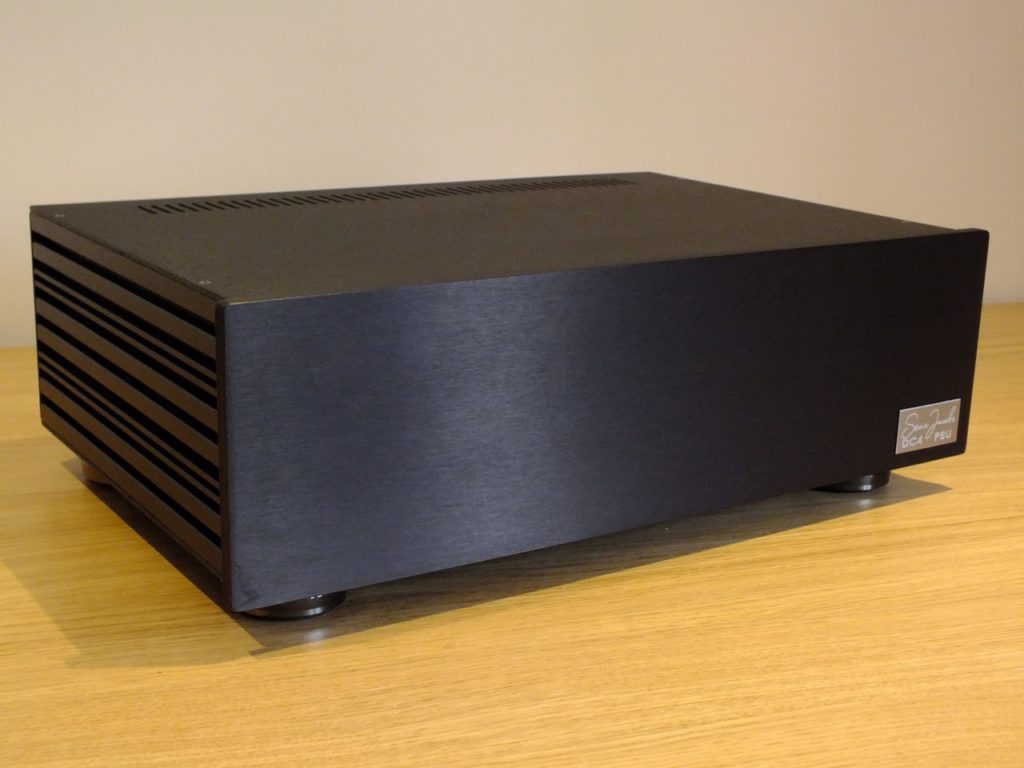
Price: $7,500
Sean Jacobs on the DC4
The DC4 is our ultimate PSU, borne from over a decade of high-end audio PSU expertise. This is the true cost-no-object concept PSU that clients keep asking us for, and it is finally here!
The DC4 uses a larger case than the DC3, and the DAVE model is fitted with 3 output rails to fully power the Chord DAVE DAC. Note that we cannot combine other outputs for other devices into this case, it’s a standalone dedicated DAVE PSU with no option of adding anything else.
We get a lot of emails asking about “double regulation”. Please note that *ALL* of our PSU designs (including our Naim Audio PSU range) are effectively double regulated *AS STANDARD*. Our regulator module design actually delivers around 8-10 times less noise than if you had two single-regulated versions of our circuit in simple series. We gain little advantage in performance by connecting two of our double-regulated modules in series, and there are downsides of increased heat dissipation and extra space needed, hence we have never offered this as a mainline option. But if low noise is the most important factor, we can offer two regulator modules in series as a bespoke upgrade option.
The DAVE DC4 has been a lot more popular than I would have ever expected. To the point where well over half of all DC4s in existence are for the Chord Electronics DAVE. And whilst every DC4 is custom built, the configuration of a DAVE DC4 is fixed (ignoring options like front panel colour, output cable length, Neotech or Mundorf wiring etc). In addition, we sometimes do tweak a few designs slightly to be more suited to certain “problem” devices (i.e. low/high current draw devices will be treated differently). We also consider whether it’s drawing a steady current or pulses/spikes of current over time, whether the device generates considerable RFI through its DC input socket, etc.
Build & Specifications
- Dimensions: 450 mm x 290 mm x 155 mm (W x D x H, with IsoAcoustics Gaia feet)
- Furutech gold-plated IEC inlet for mains AC supply
- Custom-made ultimate specification toroidal transformer (600VA for a DAVE DC4) with multiple shielding layers, fully enclosed in a stainless steel shell for additional shielding and noise suppression. Vibration isolation mounting system is used to eliminate chassis vibration which can affect the regulator circuitry.
- The new PCB is 2.4mm thick for additional rigidity and is gold-plated. Low-noise Schottky diodes are used for rectification, and the reservoir Mundorf capacitors.
- The entire DC wiring loom is made using Neotech OCC wiring with PTFE insulation
- The DC4 regulator module also contains our new “CX” module – this acts to drastically reduce incoming DC noise from the reservoir capacitors, by factors of up to around 1,000 at low currents.
- DC4 regulator modules can supply up to 5A continuous current as standard
- Full set of Vishay Z-foil “naked” resistors for the regulator section, and extremely low noise resistors for the (non-critical) CX section and for one filter network of the regulator itself.
- The CX module section uses the same Nichicon FG “Fine Gold” capacitors as the DC3 design, as we found that the KAISEI capacitors made no noticeable difference here.
Overview
The Sean Jacobs DC4 is primarily used with the Chord Electronics DAVE as a direct “plug-n-plug” replacement for the internal SMPS. The inclusion of this power supply into this review was due to requests from the audiophile community. Sean Jacobs is an acclaimed designer and known for, among other ventures, building power supplies for some of the Innuos flagship music servers. Both Sean and Vassil were kind enough to make me an adapter cable for the 5V output – solely for the purposes of this review. The DC4 wasn’t meant to be used in this type of application, so please keep that in mind.
To sound its best, the Sean Jacobs DC4 takes three months to break in. Unfortunately, I only had a little over a month with the DC4. But I believe it was a decent amount of time to get a decent idea of what this power supply is capable of. If I were to extrapolate, I would think it would sound more open and perhaps more detailed if it were given a few more months.
Dense Bodies
If I were to describe the DC4 in two words, it would be “persuasive embodiment.” If you want to not only feel your music but grasp the corporeal presence of all the performers and instruments, this power supply is second to none. It does this better than even the Paul Hynes SR7. Until the DC4, I’ve never heard of a power supply that could shape out the curvatures and material of a recording with such authenticity.
Usually, when the music is this molded, there’s a sense of “over contouring” across all elements of a recording. They all seem to have the same amount of weight, smoothness, and gravitational pull. Consequently, brass and wood seem to have been made with the same material. Which obviously sounds unnatural. But this is not the case with the DC4.
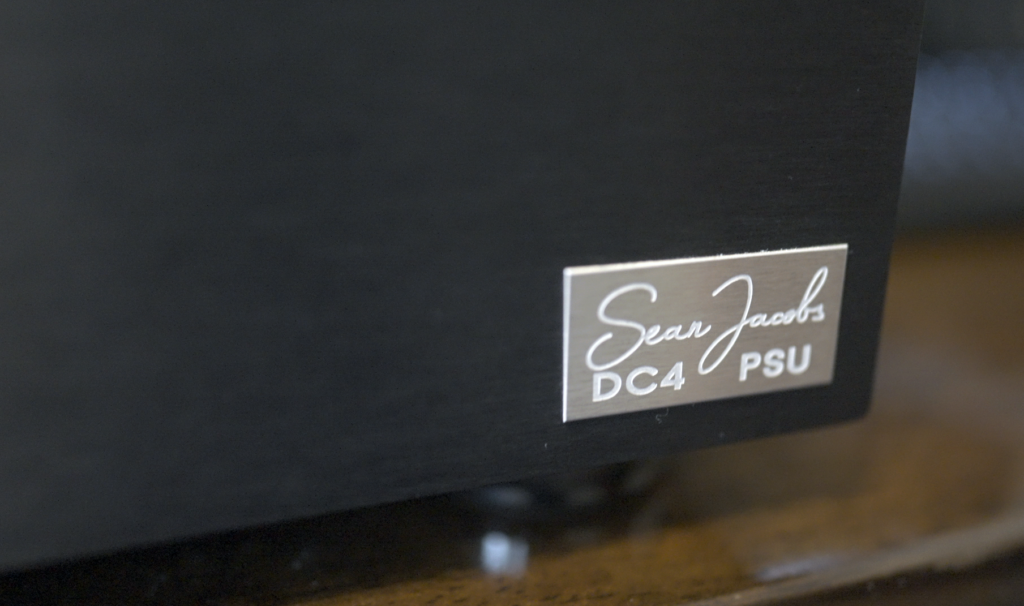
The Sound
The DC4 is able to provide adaptive lifelike dimensionality. Each actor preserves its own density and acoustic influence. Higher-pitched sopranos have a different amount of acoustic occupancy over more baritone ones. A piano placed further back in the soundstage will have lesser weight and a lighter decay than a bass being played six feet in front of it. Even reverb and decay push out – and fades truthfully.
Depending on the type of instrument and where they are in the recording space, you could hear the differences in space – and the directionality of the resonances. Soundwaves only come from where there is sound…and is quiet otherwise. This is very impressive as none of the other power supplies can do this at this magnitude.
Consequently, the background is pitch black and imaging is naturally focused and positioned. Assertive punch or impact is only dished out at the amount called for and not a “blanket” amount of force. Each part of the recording is isolated yet interacts with the rest of the players in a very wholesome and harmonic way. It’s like having the person in front of you but isn’t done with a heavy hand. For example, in Corey Gray’s Maps (Acoustic), there’s a clear distinction in how congealed the female and male vocals are in space. Their presence is carefully crafted to sound very natural.
Gradations in Density
Here’s another example, The Ventures’ The Lonely Bull. Pay attention to the drums on the right, trumpets and female vocals to the left, and strings and vocals at the center. They each throw their weight in an organic and realistic way. You could imagine the thickness of strings and the size of the instruments. This distinction could also be grasped from Dylan Ryche’s Playtime. This variance in the density and its ability to articulate these natural differences makes the DC4 stand out from the rest. You could just walk into the music.
The DC4’s ability to convey variations in density is enormous. How much of the music you feel depends on the design and composition of the actual instrument or technique of the artist. A ukelele and an electric guitar have a different sense of presence and thus – control the space differently. Another strength is in bass detail. You could hear the actual instrument bending and resonating.
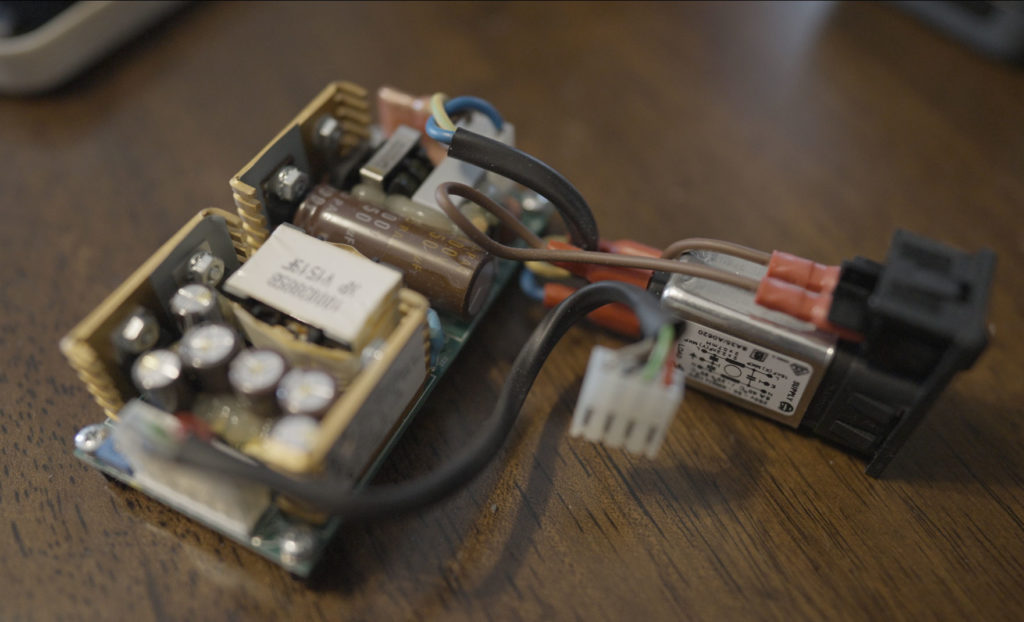
vs. Stock DAVE power supply
The stock power supply has more rawness and color to the sound. Surprisingly, I was also getting more bass out of the subwoofer as well. It’s more textured and fibrous while the DC4 is more gel-ed and solid. The stock PSU comes off a bit more aggressive and brittle…and more digital. Whereas the DC4 is heavier, more present, and much meatier.
The DC4 basically solidifies the sound, adds a coat of smoothness, and changes the color to more of a grey than a golden warm hue. It prioritizes a real sense of presence by separating out each piece of the music into a convincing 3D object. Although the DC4 does sound more “real,” the stock PSU has a truer, more organic tone. But it has nowhere near the contour, molding, or dimensionality of the DC4. It can’t produce or build out the soundstage in a convincing way. But the stock PSU does have more vibrance, air, and crunch. You trade the solidity and depth of the DC4 for more soulful coloration with the stock PSU.
To conclude, with the DC4, it’s just more physical and you feel the music more. Which makes its impression of the real thing undeniable. It’s much like going from a 2D cartoon and a live-action movie. There’s more aural perspective.
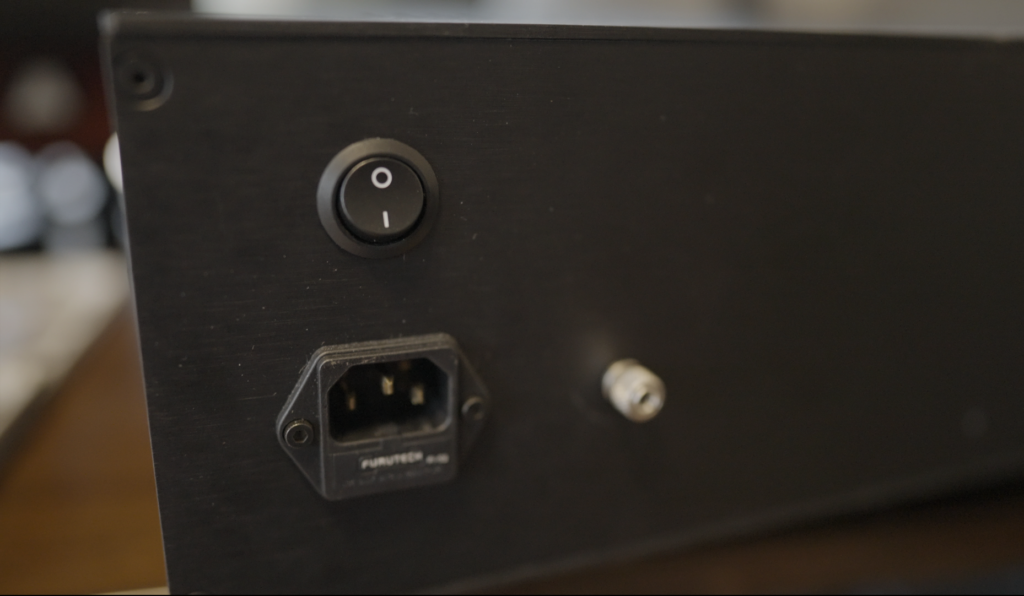
Tradeoffs
So typically, when you have this much body to the sound, the tradeoff is usually tone and texture. Luckily the oiled-skin effect is kept at a minimum. But the tone is more grayscale and colorless. So if you prefer something more neutral, this won’t be an issue. This actually goes along the lines of Sean Jacob’s design philosophy of having everything uncolored. He believes the coloring should be done at the amplifier stages.
As far as the top-end, there isn’t a lot of air or brilliance. So strings will have a thicker, duller flair to them. Which gives you the impression that instruments are played closer to you. Transients aren’t the speediest and outlines aren’t the most focused…but that plays into the more analog and cohesive sound the DC4 imparts.
Who Should Buy the Sean Jacobs DC4 Power Supply?
The DC4 sounds like a true-to-life hologram…in grayscale.
Overall, the DC4 has a sound that is “closer to the microphone” and makes the listening experience more immersive. In a word, it’s “believable.” It’s able to form all the subtleties and offer a natural sense of transparency. From Lorde to Hendrix, this is the most (weighted) three-dimensional listening experience I’ve had. There’s depth, thickness, and technique without any signs of digital. The harmonies are accurately overlapped and congealed. And the talent never gets lost no matter how complex the recording is. The DC4 is the last word in grip and control. It perfected what it would feel like to have the band in your listening room.
You should buy the DC4 if you enjoy a neutral sound and don’t mind a more shelved top-end. The DC4 is not tonally variant and does not sparkle or have a lot of air. Bells and shakers don’t really radiate with bling or zing. Personally, I would also prefer a bit more rawness and color. Aside from that, it is the most “real” sounding power supply in this review. There isn’t a single hint of digital or harshness that breaks the illusion of having the performers in front of you.
Pros | Cons |
|
|
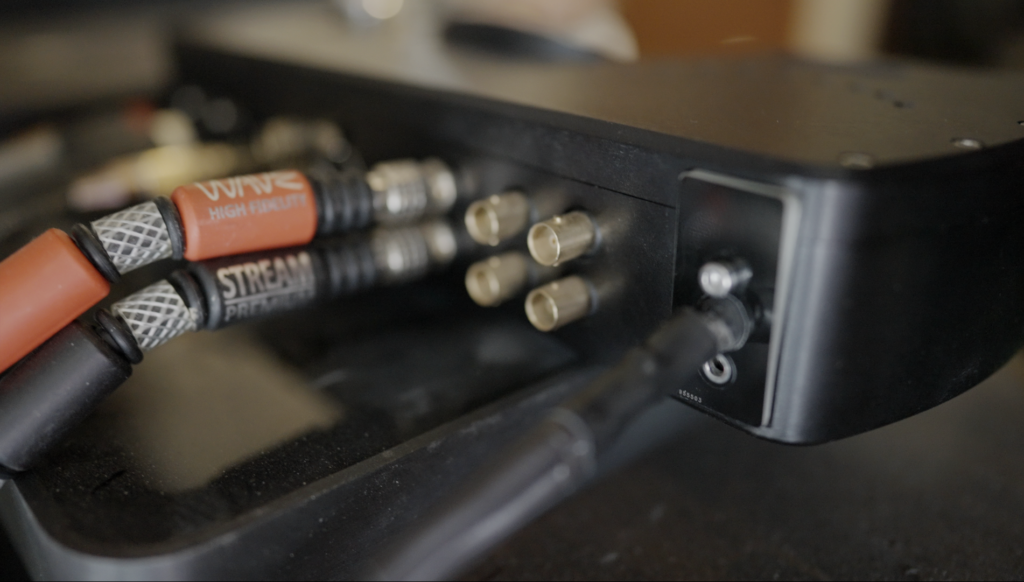
Comparisons
vs. Paul Hynes SR7
- DC4 has more 3D realism and articulates better than the SR7.
- SR7 has a speedier more vibrant sound. The DC4’s top-end is much duller.
- Both have similar tone.
- DC4 has more bass output.
- SR7 has more flair and air while the DC4 is heavier and more melodic.
- There’s more balance in clarity with the SR7 and more form with the DC4.
vs. JCAT Optimo 3
- These are two very different power supplies. The Optimo 3 is darker in tone and more generally articulated. While the DC4 takes the realistic molding to another stratosphere. The kicker is that the Optimo 3 does have a more natural tone, albeit darker gray.
- Optimo 3 has heftier bass but the DC4 has more low-end gradations.
- DC4 is technicaly superior – by a large margin. Imaging, depth, soundstage, contouring, detail. The Optimo 3 has more of a “coating” for easy listening.




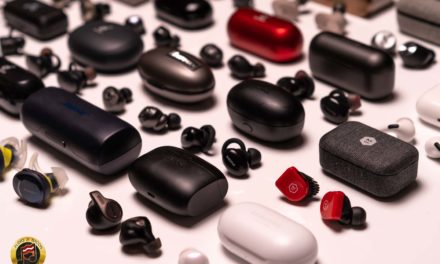
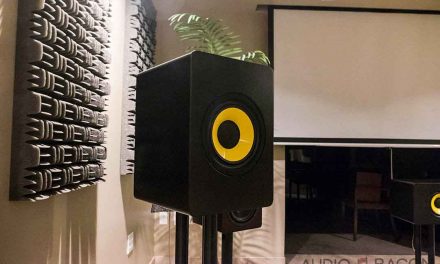
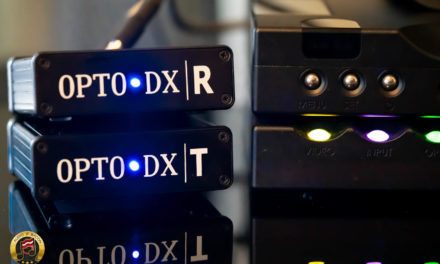


Well Jay, you have only just gone and done it again. Another mammoth review. Don’t you ever sleep!?
As a Dave owner I was lucky to obtain the first production version of Sean Jacobs DC4 and have been using that ever since with a big grin on my face every time I use the Dave. It has possibly been the biggest improvement to the sound of my system (with the possible and honourable exception of my own Wave High Fidelity STORM dual BNC cables of course!).
However all of that is about to change because Sean has been kind enough to loan me a prototype of his new ARC6 version of the DC4 power supply. Having had the Dave all this time I was not aware of any deficiencies. That was until I plugged in the ARC6. As you say in your review the DC4 is a master at revealing the texture of instruments but now the ARC6 version has a transient speed to go with that textural information. It is a quite uncanny combination. The bass is also deeper and more powerful and yet manages to more detail and information in it at the same time.
You will gather that I like the ARC6 upgrade to the DC4 for the Dave. It is a huge upgrade to the Dc4. I understand that existing owners of the DC4 can have theirs upgraded to the ARC6 version by returning to Sean or to one of his agents in the USA or EU.
But that is not really why I was minded to put pen to paper in response to your review. A few months ago I did my own private shoot out of power supplies powering the Qutest. These included the Sbooster with Ultra Mk2 upgrade, Farad Super3, Allo Shanti, MCRU, Sean Jacobs DC3, PowerAdd battery, iFi, a cheap LPS from China and of course, because I could, the 5V rail from a DC4. Broadly I agree with all your comments and in the end I used the Farad Super3, not because it was the best but because it was a reasonable amount of money to spend for the performance gain with a Qutest. One thing to say about the value for money Allo Shanti is that if one has the necessary skills it takes a leap forward in sound quality if the supplied captive leads are removed from the circuit board and GX16 sockets are installed allowing after market DC leads.
I have more recently listened again to a DC4 powering the Qutest and although first time around I rejected the idea of a single rail £4,000 DC4 powering a £1.200 Qutest as being any where near a sensible decision I have now begun to wonder whether in fact it brings the £5,200 combination up to a level of similarly priced DACs and I think it might just do that. Such is the benefit of the DC4 with a Qutest.
So, thanks once again for the huge undertaking and it is nice of course to see you still using my WAVE STREAM cables with your Dave. 👍
Nick.
I would be curious to hear the ARC6! Is there a tonal color difference between DC4 and ARC6? More shine?
I agree, the Farad Super3 is a great value, especially if you enjoy that more liquid and smooth sound. From memory, I thought the Mojo Illuminati V3 paired well with the Qutest. And I could definitely hear the potential of the Shanti, the price is incredible for its performance (but critical listeners won’t be happy). GX16 sockets with custom cabling would be interesting.
Have you tried batteries?
I run my RME ADI-2 fs DAC and streamer on pure LiFePo4 cells (without any battery management electronics of course). The DAC uses 4*3.2V 20AH cells in series, and the streamer 2 of the same in series. The batteries last more than a day so I charge at night when sleeping.
It would be interesting to know how batteries like these compares to the better power supplies.
Yeah, I was thinking about including batteries as well. Which specific ones would you like to see?
I think the more “pure” cells you use the better, and not small AA or similar batteries. Here is the ones I use:
https://shop.gwl.eu/LiFePO4-cells-3-2-V/LiFePO4-High-Power-Cell-3-2V-20Ah-Alu-case-CE.html
Of if you want one ready made for RME DAC, this one works (its just 4 cells in series), should be similar available in NA if that’s where you live: https://shop.gwl.eu/LiFeYPO4-batteries-12V-1-1/Lithium-Battery-LiFePO4-12V-20Ah.html
But basically you want low internal resistance in combination with pure cells. For example, a power pack used for mobile phones sounds a lot worse (they have switched DC regulators inside to get to 5V).
It also important to stay away from “battery management”, even if you risk damaging the cells if overcharged or undercharged. Those battery managements are filled with switched cheap electronic.
I then have 18 awg OCC coppar cables with cotton sleeves as only insulation, soldered to a DC connector of copper.
A whole nother world there! I’ll look into it.
Yes, it is. I like the sound of my LiFePO4 batteries though, and LPS manufacturers often use batteries like those as “reference” to compare with (or so I have heard).
It’s also worth mentioning that Stromtank (a really expensive HiFi power gear) uses LiFePo4 cells for their “magic”, but enough of them to also drive power amplifiers.
You should include some of Gieslers power supplies. Aussie seller very high quality supplies. Kraftwerk 2
https://www.gieseler.com.au/product-page/kraftwerk-ii
Not even a Contact Us email address. Doesn’t infuse confidence unless you’re inside Australi and can call them.
Would been nice if u would included Ferrum Hypsos!
https://ferrum.audio/hypsos/
They said they would send the Hypos in…but I never received it. Will check again.
Amazing post Jay. The table of results especially. I’d also love to know where the Hypsos ranks if they ever send you one.
Thank you! Yeah, I haven’t heard back from Hypsos. Oh well.
Hello,
Maybe invest in some gear to measure them Jay?
Best regards
Geoff
Pachanko Stellar LPS would have been also interesting to see compared with all these.
Request sent.
Cool : )
Please consider the SOtM SPS-1000. I heard its very good.
great work – thanks a million!!
comment to the Sbooster PSU: i kind of relate to your findings (using mk 1 version), adding (now unavailable) Padis fuse and Furutech Absolute Power adds LIVE to it. yet, possibly also to all other PSUs tested here
Yeah fuses could make all the difference…maybe I’ll test those at a later time.
Hi there,
I know you cannot review everything under the sun, but I’ll selfishly propose you review the ISOL-8 Prometheus LPSU. Their power conditioners are great and I would be curious to see how their power supply compares with the others.
Amazing amazing review; very well done! Thank you!
So, farad 3 isn’t that good?
What fuse and iec did you get within test unit?
My Farad Super 3 is custom modified, but I think it performs very well. Along w/ Jay I am factoring in price and its incredibly diminutive size.
I am also curious about the remarks in comparison to other PSUs, which cable was used: silver or copper?
Listening was primarily done with the copper cable. Still great for the price, especially if you enjoy a full bodied and smooth sound.
Jay,
This is an incredible review and many thanks for doing this for all of us. I have one question though, what was the DC cable used between the LPS units and the JCAT PCIE card?
Thanks,
Bob
My pleasure. I used the DC cables provided by the company. A few of the LPSs offer optional upgrades (Farad and Plixir). I also used a custom one for the SR4/SR4T (UPOCC copper instead of silver).
hi jay,
what a great review again. And what a lot of work this must be to do this as correctly as possible.
I would like to add something about your tests.
A DC and power cable can make a huge difference and therefore give a different rating.
With the Farad super3 I have quite a lot of experience in that area and with fuses etc. before that with IFI,S booster MK1 and MK2 and Paul Hynes SR4T. and now several Farads Super3 in use. for me here the SQ of the farad is unbeatable.
What strikes me about your tests is that they play for a few days at most and then again to do the comparisons.
From the synergistic orange fuse that you had put in the farad, I know that it has to be played for at least 1 month for the right result. in the meantime, he himself may start to sound worse.
With regard to the farad itself and its level2 cables, this minimum is at least two weeks to play in. And keep it on continuously.
I can certainly agree with your observations, recognize that too, but leaving everything on for at least a month gives an even much better sq.
This is much more important with the Farad with orange fuse and furutech inlet and level2 copper DC cable than with all other power supplies I’ve had in the house.
So I’d suggest trying these run-in times voor the Farad and leaving him on all the time and reviewing it again. The difference in my system is in any case very large.
Thank you! I understand the DC could make a significant difference, but I try to focus on the elements that don’t change between cables. In the case of the Farad, the silver and copper level 2 cables.
I have not tried any fuses and that could make an even bigger difference. The ones in the review unit were SR Orange. I slightly prefer the SR4T due to the the more open and textured sound. But the Super3 is meatier and more contoured…and admittedly has better color. I just feel the Farad smooths over some of the finer grain details. As long as you enjoy it, it doesn’t matter.
I kept all power supplies plugged in for the 4 months. Depending on which ones I’ll be evaluating, I’ll hook them up to gear (not under test). You may be right and that the Farad needs more time to break in. But generally the tone isn’t for me – especially with the silver cable.
I’m glad you enjoy the Farad Super3! It’s amazing bang for your buck.
Jay,
Just wanted to show utmost appreciation for the tests you’ve conducted! I must admit I was hoping to see one of the new SR7’s in on the bench. During the more recent PHD days Paul released larger SR7s with 12v/12a an 19v/10a railed with option for “Turbo” which was supposed to bring the production units more in line with the dual regulated supplies. Would have loved to see where it fits into the puzzle. Unfortunately it will be next to impossible to obtain one unless you find one used at this point.
Also, I have built up a dual rail 5v LPS based on MPAudio ALS-HPULN power supplies. Its fairly simple to do so using their chart to size up the proper transformer specs. These are literally just IEC inlet, transformer, LPS module, output. It would be great to hear your thoughts on those. I’ve got some CAD mock-ups to help you get started with a build if you’re interested in building one up.
Also, you may want to try some of the newer unregulated power supplies that are storming the DIY community to power your server! I think you’d enjoy hearing the impact of this + replacing the HDPlex 800W DC-ATX with the Taiko DC-ATX.
Cheers to a job well done.
-Rob
I was thinking about DIY’ing my own supplies. I’m open to giving it a shot! jay@audiobacon.net
I’ve heard great things about the Taiko DC-ATX…is there specific components people are pairing it with? (motherbaords, cpus, etc).
Hi Jay,
Fantastic. I will send you my CAD mock-up which you can then send to DIYAudio Store to have them CNC an enclosure for you. This same enclosure has been used in two of my DIY builds: DC3 dual rail LPS (For network switches), and MPAudio ALS-HPULN Dual rail 5v for powering my Femto clocked NVME and CoreAudio P24 USB card.
As for the Taiko DC-ATX, there is no specific recipe. Many of us have experienced the substantial benefits of powering single CPU and dual CPU builds with the Taiko instead of the HDPLex. It is A LOT more transparent and efficient than the HDPLex. In my case, I use it with an i9 9900k CPU / Gigabyte Designare Z390. Others have had luck with the newar z490/z590 based i7/i9 builds. One can also choose to embark upon a larger journey using the same CPU/motherboard as the Taiko SGM Extreme (there are some major SQ benefits in doing so but I have not done this myself yet).
Will send you more details via email!
Cheers,
-Rob
I have good luck with Teddy Pardo units, one for a Chord 2Qute, and one for my Raspberry Pi / HifiBerry Digi + combo.
Never heard back from Teddy. Glad you enjoy it!
Hello Jay,
I am a builder of custom linear power supply in Hong Kong
Glad to see your shootout of audiophile LPS
would you have time to also review my creation?
I will send a unit to your location for review
please drop me an email, will show you photos and the specifications
Cheers
Please email me at jay@audiobacon.net
Hi
I sent you two emails in the last two days
Did you receive them?
Hi Jay,
why don’t you post my comment which i sent yesterday?
I see a a bunch of small LPS on the market, but the bigger ones (150watt+), not so much.
Keces P8 (especially the 8amp * 1 unit) has been my best sound.
My 200watt HDPlex isn’t even close.
Hello Jay
Fantastic shoot out !! Thanks
I would like to emphasize that Paul Hynes power supplies is closed.
The company was taken into liquidation now.
The curious thing to me on this shoot out is that it didn’t test where I’ve experienced the biggest impact with LPS supplies… powering the USB source server. Powering a USB card is a bit too late, degradation has already happened.
Hi Jay,
First of all my total admiration for this massive effort. lately your site became a bit more silent and I figured your time is precious and after all you allready put out in the past years it was time to slow down. You were working even harder! This information is worth gold, thanks so much for sharing.
To my question now. I recently had 2 out of 3 of my LPS die. They lasted 3 to 4 years. Did you ever consider or evaluate life expectancy for a LPS.?Mine were in the $4-500 price range and I was told to expect this. Some users think apparently the more expensive ones of $ 1000+ could/should last 10 to 20 years I was also told.
Is there anything more clear you can share about this?
Love the reviews. Just wanted to chime in and say that the biggest performance killer of the JS-2 is the stock DC cable it comes with. Change the lean sounding stock Canare 4S6 with a custom, shorter Canare 4S8 (or better) and throw in a Synergistic Orange fuse, and the power supply is transformed.
I guess you could say that about all of the Power supplies above, but it is a shame that the cable the JS-2 ships with limits it so.
Yeah, it’s a bit lean. I’ll have to try that!
I believe the DC cable has a huge impact. I’m still contemplating purchasing a JS-2 and will explore cables afterwards. Thanks for the rec!
Jay, where is the Plixir sold in the US please?
I wasn’t able to find a vendor. However, James Soh at Plixir will sell and ship directly to the US (I’m in TX) without issue. I’ve bought 3 Elite BDC’s from Plixir. Love them.
Jay, GREAT REVIEW! What a big lift!! The Plixir Elite BDC with Statement cable is now powering my Qutest, my Lumin D2, and my Roon Nucleus+ revA. It’s nearly impossible to overstate the improvements!!
Hi Jay,
Why the SOtM sPS-500 is not included in this review?
Hey Jay great work! I am about to buy a LPSU for my Anubis Dac and not sure how to go because there are so many. One that seems to stand out a bit in terms of price/ value is the mcru psu. Have you heard/tried it yet? It seams promising, only dave the guy that sells them isnt up to date when it comes to customer relation.
Cheers!
Sorry I haven’t heard this PSU! Will put it on the list.
Great review, impeccable work, I found this LPS very interesting, maybe here I can get an answer if it will sound good in my setup: I use a neutral and half-warm sound DAC, with a bit of smoothness (Topping e30), a neutral and drier amp (Allo Volt+D) and an entry level speaker, also neutral half-warm (Pioneer SB22-LR), the midrange of E30 is a little bit thin (but with a little EQ I can ease it a little), did you say in this review that there is some grain in the midrange of this LPS and a cool tone, could this generate a bit of harshness and annoyance in the sound?
Which LPS? If your goal is to add more body and warm it up, sort by “shape.” The JCAT ones might be a good fit.
Hi Jay,
Thanks again for taking the time to perform this outstanding LPS evaluation and shootout. In the context of what is the best sounding LPS (for your sonic preferences) on an audiophile network switch, have you evaluated and drawn your personal conclusion? In my particular system where my digital upstream is Cisco Home Network Switch > CAT6 (or Fiber) > EtherRegen/Uptone 1.2 LPS > Gobel Network Cable > Aurender N30SA, I’m exploring areas where I can make an improvement ranging from adding an additional audiophile network switch, replacing the Etherregen / Uptone 1.2 LPS, adding a Cybershaft Clock, etc. Based on your evaluations to date, assuming cost was not a consideration, what upstream hardware signal path chain have you determined sounds best (per your liking) vis-à-vis network switches, power supplies, clocks and cables?
I will be exploring this real soon. Finally got my Gershman Speakers so I’m setting them up in a “fresh” room without an easy way to get a wired connection in. I might have to order another fiber line just for that side of the room lol. But as far as Ethernet cables, I do prefer the The Linear Solution Reference ones. I still use SOtM ISO-CAT6 adapters. Never heard of the Cypershaft Clock. How do you like it?
Thanks Jay great review, I need to bookmark this as a reference. Didn’t you miss Teddy Pardo ? 🙂
Glad you enjoyed it! I did contact him, no response 🙁
Hey Jay, thank you for doing these comparisons. They give me at least somewhat of an idea of what to expect. I currently have both the Uptone JS-2 and Jcat’s Optimo 3 Duo. Have you ever tried using two power supplies from your list in your chain at the same time? The reason why I ask is because I had tried using the JS-2 to power both my Jcat usb xe card and xe net card and while I really liked the sweet and nimble tone, having the JS-2 power both at the same time seemed to stretch the sound too “thin”. The unit got extremely hot (no exaggeration) as well, when powering both Jcat cards.
I than switched the JS-2 for the Optimo 3 Duo and while the Duo retained it’s sonic integrity when powering both cards, I found myself missing the sweet tone of the JS-2. The Optimo 3 Duo had bass in spades, (sometimes even fatiguing amounts) as well as body and tonal density, but I found myself gravitating towards the JS-2 just slightly and I began to wonder if relegating both power supplies to power each card could result in the best of both worlds scenario. The idea felt like a sort of first world solution/approach, where you just throw more money to fix a problem… but ashamedly, I think it worked. It gave me a sound that had body and density while still possessing the sweet tone of the JS-2.
The setup currently is the JS-2 going to the USB card and the Optimo going to the Net card. I had upgraded both fuses on both lps’ to the SR purple fuses. I would be very interested to know if you had tried something similar and what your impressions are.
-Jon
Hey Jon! My impression of those two supplies is very similar to yours. The JS-2 does have a sweeter tone (the JCAT stuff is darker). Depending on the power supply, driving two devices could result in a flatter, thinner sound. The beefier power supplies seem to handle multiple devices just fine. To answer your question, yes. I would recommend trying all the permutations. JS-2 on one of the cards and Optimo on the other, etc. And see if you can reach a balance. More often than not, the darker stuff will blanket the more nuanced gear. You won’t know until you listen for yourself. There are way too many variables to be definitive. Would love to hear what your thoughts are in your experiment. What do you hear?
Hey Jay, I just received a Nikola 2 lps and let me just say, it blew away all of my other linear power supplies that I own in tone and “musicality”. I have the JS-2 going to the jcat net card and the Nikola 2 going to the Jcat usb. You were spot on about the hi hats and cymbals on the Nikola, just amazing. The Nikola 2 is definitely my favorite of the bunch.
Glad you enjoyed it! I ended up purchasing the Nikola 2 after the review because its reference level tonality.
Very curious if you’ve had a chance to hear the ifi elite power supply. We all can’t afford $600 power supplies on all of our gear. The Elite looks worth a review at $300
I have not. Will include in the next one!
I’d second this. I’m using it for my EtherRegen.
The ifi Elite is easily available on both sides of the Atlantic, and though not apparently a linear power supply it does seem to be a worthwhile contender here. In fact, their site claims it to output lower noise than most LPSs.
However, there doesn’t yet seem to be any published reviews of it, so perhaps a great opportunity to generate site traffic for AudioBacon.
That’s an interesting suggestion. It certainly would be interesting to see how the Elite compares to other linear power supplies. I’m curious to know what the results would be but I haven’t heard from iFi in a while.
Hi Jay !
Now I have 2 power supplies in front of me, Ifi elite and sbooster BOTW for my switch EE8, in general they are the same level but the presentation is different.
Ifi a lighter and more transparent presentation, not to be confused with the lightness of the sound, the sound is tight, detailed with a good stage.
Sbooster emphasis on the lower middle to the detriment of the lightness of the sound and its detail.
–
Maybe BOTW mk 2 with its ultra mk 2 will be better, but … there will always be something better and not try everything, if the size of the power supply or price is important, then ifi will be an excellent choice given its price on the secondary or with dealer discounts.
And of course, the difference on the switch may not be as dramatic as on the DAC’s/streamer’s.
From the sound of it, I’d probably prefer the BOTW personally, but to each his own. I’m sure you could find a place in you system for both.
Could you possibly review the Keces P-8 LPS and compare it to the UpTown Audio JC-2?
Didn’t hear back from them.
Such a good read and source, thank you!
Wondering if you’ve had a chance to to try the sbooster with the Ultra MKII add on?
I haven’t tried the add-on. 🙁
You should definitely add one of the highly acclaimed newcomers, the ifi Power Elite. And also really try to get your hands on a Hypsos to make this review complete.
I’ll give it a shot! Still trying to get the Hypsos in. Will let you know.
Antipodes Audio offered internal power supply upgrades for their legacy server/players – changing out the existing LPS to their “Hybrid-Linear/SMPS”.
I found the upgrade to be a substantial improvement in sound quality – at least a 15% expansion of soundstage.
So I ordered their external stand-alone 12V hybrid version [S60 model] and found it too, to deliver a significant jump in SQ over my over-built, homemade LPSs using Bellison regulators powering Uptone Audio EtherRegens.
I then purchased the Hypsos to bypass the internal LPS of my SingXer SU-2 DDI and heard the same level of improvement. Antipodes claims the hybrid approach is a “faster” supply, able to deliver better transient current delivery needed in many digital circuits but without the noise of a pure SMPS.
I then tested the Antipodes S60 vs the Hypsos with the EtherRegens and found them very similar with the Hypsos being half the price and offering the flexibility to vary the voltage and providing 3X the current.
I’ve tried using up to 1KW toroids, 80,000uF of Mundorf electrolytics, 2A to 10A chokes after the rectifier and this level of overbuilding did not improve the sound in my setup. And certainly didn’t come close to the Antipodes or Ferrum Hypsos hybrid designs in terms of SQ.
I have been told that one aspect to the best LPSs is using multiple smaller value caps to lower the impedance. I have not made the effort to substantiate this but I’ve seen it executed in the Phoenix USB Regen and the Mutec Ref 10.
Although I’m not sure that a “fast” supply is necessarily needed for powering an OCXO as a timing reference…
An excellent tweak for squeezing at least an extra 7% of blacker background in a timing application is to insert Gold Bybee purifiers in series to the Vin and GND of a TCXO or OCXO if you’re so inclined. Worked well on the Phoenix USB Regen [a very easy mod] as well as the Mutec Ref 10 SE120[a more challenging mod].
This EAhibrid PureDC-B1 from Taiwan seems a very promising product, it uses the same type of battery as used in Tesla.
I am curious to know how does it compare against these well known LPSs! thanks!
https://www.eahibrid.com/?locale=en
Hey Jay, thank you so much for this video. Its a very important part of audio and still little comparisons like this in the segment.
I am currently building a server and was trying to find reviews on a big ATX LPSU from TeraDak, thats similar in price to Jcat. Do you know about this and did you carfully left it out for some reason?
https://www.aliexpress.com/item/4000811321048.html
Niclas
Hello Jay, this was a great read and I enjoyed the accompanying video too. I noticed that you listed Chord HMS + Wave cables amongst your kit. Did any of the tested LPS units come across as more ‘compatible’ with the HMS/TT2 + Wave BNC cables?
Hello,
Thank you for sharing all is information, it’s very instructive.
am looking for a 19.5 VDC continuous power supply to pair with my Sony Dmp-Z1. I’m looking to get rid of the batteries to preserve them as much as possible and as I use the dmp-z1 in a sedentary way, it’s not a problem to add an external power supply, especially as I’ve read that it can improve the sound quality.
You have presented several power supplies in front of the important number and the difference of the prices, I am a little lost and I do not have your experience. That’s why I want to ask you if you could give me a choice of 2 to 3 pieces of equipment that you think would be relevant, coherent and judicious to be associated with my dmp-z1?
Thank you very much.
Regards
Pascal
Hello,
thank you for the comprehensive analysis. I am considering buying either a Plixir or a Farad (with Purple) or two of them for my chain of Melco S and N 100, T&A DAC 200, Accuphase E5000 and Gauder Capello 100. Do you perhaps have a recommendation? I will probably just have to listen to both against each other.
Many greetings from Germany
Alexander
Excellent review, but looking at the Pros/Cons for each, I’m not more confused about which one I want for my RME ADI-2 than before 🙂
Which one do you recommend for:
1. RME ADI-2 FS (DAC) – especially if it’s creator says LPS won’t make much of a difference, and calls LPS a snake oil
2. Lindemann Limetree Bridge II (streamer)
Thanks!